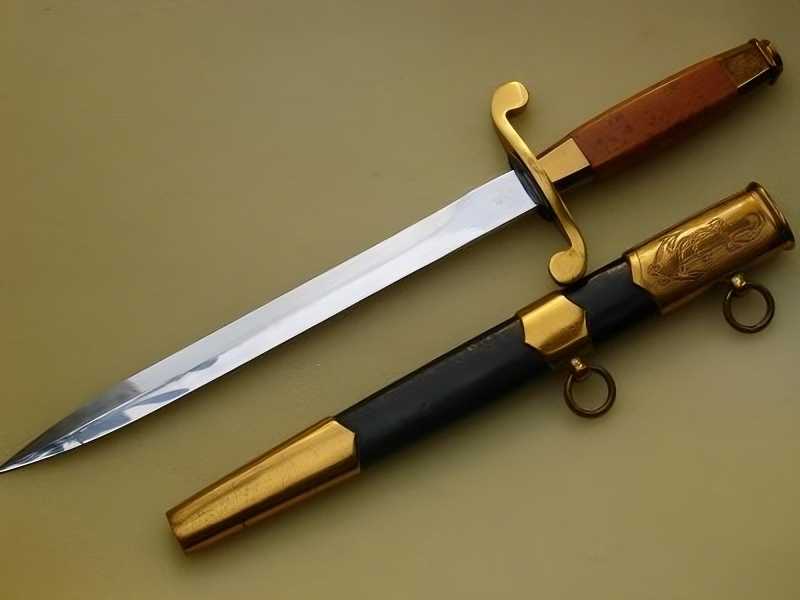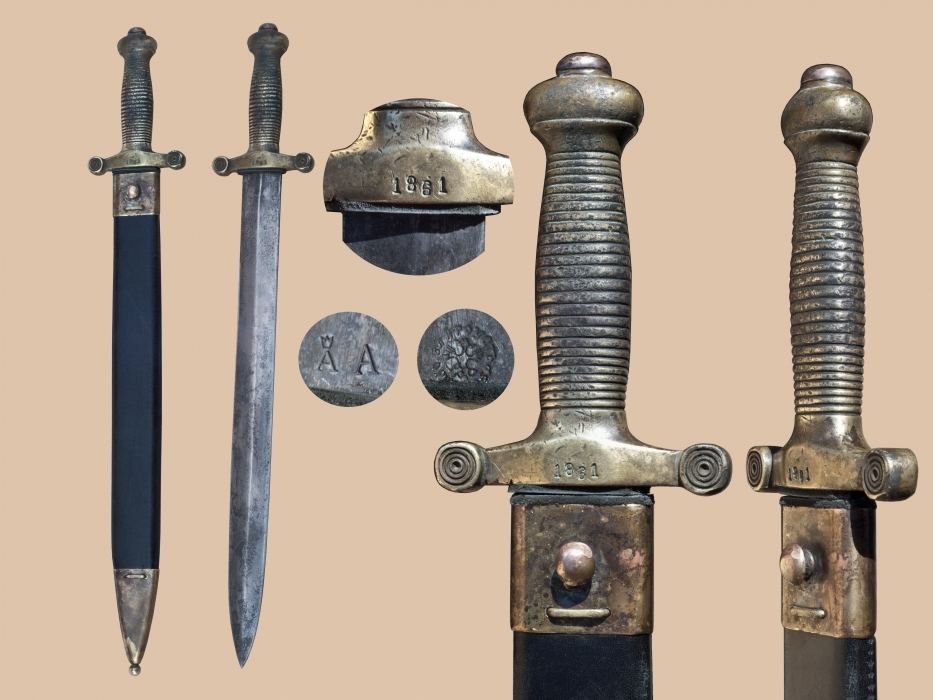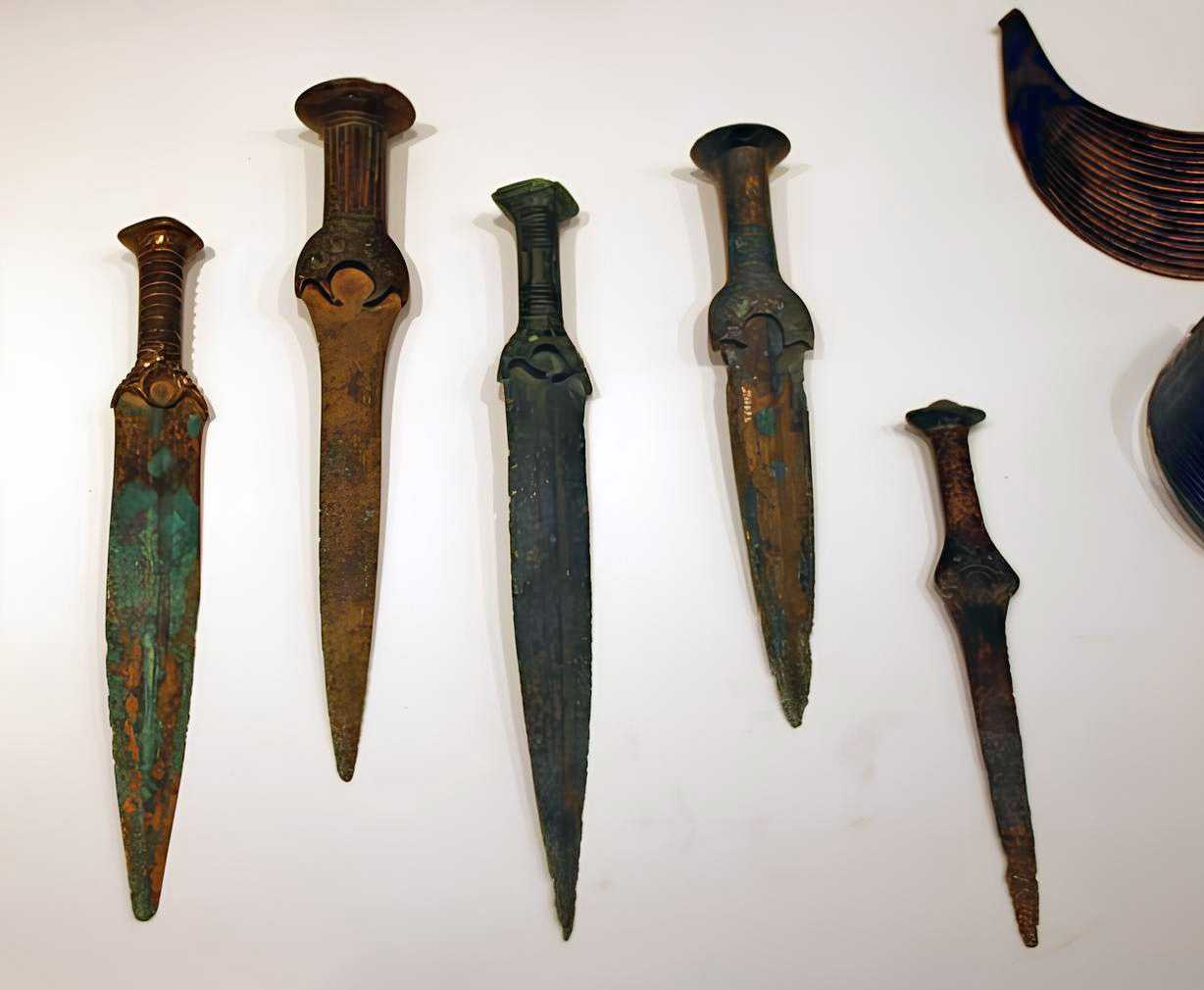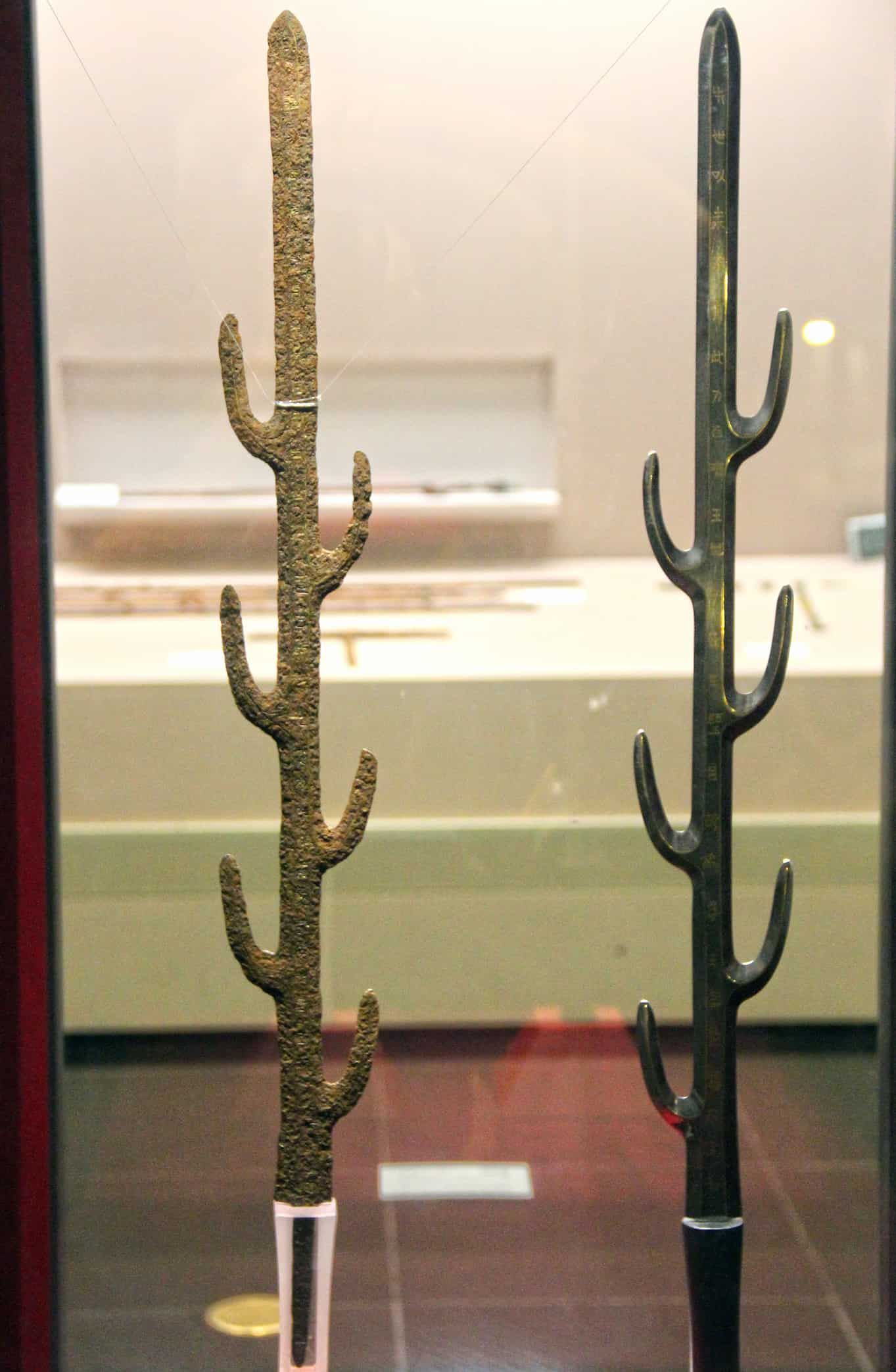Edged Weapons at a Glance
What are the three main blade lengths for edged weapons?
The three main blade lengths for edged weapons are short-bladed (up to 12 in or 30 cm), medium-bladed (12 to 20 in or 30 to 50 cm), and long-bladed (longer than 20 in or 50 cm).
What is the history of edged weapons?
The history of edged weapons dates back to the Upper Paleolithic period (40,000–10,000 BC) with stone knives used for cutting. Copper, bronze, iron, and eventually steel knives with a piercing edge developed much later. Swords and daggers followed, with the oldest swords ever found being the Arslantepe swords from 3300 BC made of arsenic and copper alloy. Over time, different types of edged weapons emerged, including the saber and rapier.
What are some types of edged weapons?
Some types of edged weapons include the combat knife, dagger, stiletto, dirk, and sword. The combat knife predates all other edged weapons, while a dagger is designed only for use in battle and not as a cutting tool. The stiletto is a type of dagger with a short to medium, faceted or circular blade that is used for piercing. A dirk is a piercing weapon with a rhombic-shaped blade, while a sword is a two-edged stabbing and slashing weapon with a medium- to long-length straight blade.
What is the difference between a dagger and a knife?
A dagger is distinct from a knife in that it is designed only for use in battle and not as a cutting tool. Daggers have a short to medium 2-sided blade that can pierce armor and cut through clothing, while knives are much more compact in design and their blade normally has a single, sharp edge.
A cold weapon with a warhead in the shape of a blade fixed to the handle is referred to as an edged weapon. An edged weapon is also known as a bladed weapon. The edged weapons include swords, knives, rapiers, daggers, and sabers. The tip of some polearms, such as glaives, is fashioned like a blade, but despite this, it is not categorized as an edged weapon but as a thrusting weapon.
Blade Length in Edged Weapons
The blade is an elongated metal warhead whose specifications affect the specifics of the damage done. Edged weapons may chop, slash, pierce, pierce-cut, or chop-cut depending on the form of the blade and the composition of the tip and blades.
When it comes to length, there are three main blade lengths for the edged weapons:
- Short-bladed: Up to 12 in (30 cm)
- Medium-bladed: 12 to 20 in (30 to 50 cm)
- Long-bladed: Longer than 20 in (50 cm)
History of Edged Weapons

The knife was the first weapon to include a blade. In other words, it was the first edged weapon in history. Swords and daggers followed. A group of researchers from Rome University uncovered nine edged weapons from 3300 BC in the 1980s. The experts concluded that the Arslantepe swords were the earliest and oldest swords ever found. An arsenic and copper alloy were used to create them.
The mechanical advantage of single-edged swords over double-edged ones made them ideal for use in equine combat. In the 7th century, the swords developed a little curve that led to the creation of sabers.
The curve gave the edged swords better striking power than traditional swords, especially when riding on a horse. By the 13th century, they had spread over most of Asia and Eastern Europe, where they ultimately replaced most other edged weapons.
Once the stabbing qualities of swords were improved, the first small swords and later rapiers emerged in Europe in the 15th century.
Types of Edged Weapons
The classification of edged weapons is done according to their form and function. Throughout history, several edged weapons have been given definitive names:
Combat Knife

The combat knife predates all other edged weapons because of its ability to pierce and cut. Since the Upper Paleolithic period (40,000–10,000 BC), we have known mostly about stone knives used for cutting. Copper, bronze, iron, and eventually steel knives with a piercing edge developed much later.
Almost every culture throughout history has used and continues to use combat knives. Their size usually varies between 10 and 12 inches.
Dagger

A dagger has a short to medium 2-sided blade that can pierce armor and cut through clothing. The blade might have a straight or curved profile.
The length of a dagger may vary from 5 to 12 inches. Compared to daggers, knives are much more compact in design. The blade of a dagger normally has a single, sharp edge.
A dagger is distinct from a knife in that it is designed only for use in battle and not as a cutting tool. Two-edged daggers appeared here and there as well.
Stiletto

A stiletto is a kind of dagger with a short to medium, faceted or circular blade that is used for piercing. The length of a typical stiletto was about 12 inches (30 cm).
The stiletto is a direct descendant of the misericorde (“dagger of mercy”) carried by medieval knights into combat. It was designed to break through the weak spots in the knight’s armor and kill him while he was dismounted.
Various cultures made use of and adapted this kind of weapon. However, its tiny size made it ideal for covert operations. The Japanese kanzashi, for instance, was an edged weapon in the form of a hairpin.
Dirk

A dirk is a piercing weapon with a rhombic-shaped blade that is either short or medium in length. True dirks are the only edged weapons that fit this category. The length of a dirk can reach all the way up to 20 inches but not smaller than 12 inches. In other words, they are longer than knives, daggers, and stilettos but shorter than swords.
Scottish settlers in the 1700s brought the dirk to the United States. This weapon had a single edge at first, but by 1745, two edges became the norm. Dirks were often fashioned from dismantled swords.
Sword

A sword is a two-edged stabbing and slashing weapon with a medium- to long-length straight blade. The Arslantepe swords from 3300 BC are the oldest swords ever found, and they are made of arsenic and copper alloy. Bronze swords from the 2nd millennium BC are also one of the first known examples of this edged weapon.
However, in other societies, bone and wooden swords with stone blades are documented as well, which may have been the forerunners of metal swords.
Swords combined the features of knives and axes. Over the centuries, some swords have become primarily designed for thrusting, while others are designed for cutting. This led to the emergence of new types of swords and other types of edged weapons. The length of an average sword is 30 inches (75 cm), while the weight is 2.5 lbs (1 kg).
Basket-Hilted Sword

The basket-hilted sword is a sword-like weapon with a single, long, straight blade used for piercing and cutting. This edged weapon’s hilt was occasionally inclined to the axis of the blade to maximize effectiveness when used by cavalry.
The blade length of most basket hilt swords was between 32 and 36 inches. Including the hilt, the overall length of the sword might be anywhere from 39 to 45 inches.

In the past, the basket-hilted sword was occasionally used to describe a weapon with two blades or a curved shape; however, this is no longer the case. The 16th-century basket-hilted sword was widely used by heavy cavalry up to the time of Napoleon. It thereafter fell out of favor until the early 19th century.
Saber

A saber is a weapon with a long, curved blade, the “convex” side of which is used for cutting and stabbing. Curving the blade provided the sword with better cutting qualities, increasing its efficacy, and this alteration apparently occurred by chance.
Nomads in Eastern Europe and Central Asia likely came up with the saber at the same time since they were one of the earliest cavalries in history.
Turkic and Mongolic nomads of the Eurasian steppes used “Turko-Mongol sabers” between the 8th and 14th centuries. The length of their blades was between 30 and 40 inches (75 and 100 cm). The Avar cemetery in Romania contained the oldest discovered sabers from the 650s AD.
Shashka

A shashka is a long, single-edged weapon used for cutting and chopping. The blades of the leppa and katana are all very similar to those of the shashka. It is a backsword with one blade and no guard.
The shashka is a hybrid weapon that combines elements of both a straight sword and a curved saber. The slightly bent blade can be used for cutting or thrusting with equal efficiency.
The most prevalent shashkas are without bows (Caucasian and Asian kinds), but there are also shashkas with bows (dragoon type) that seem like sabers but aren’t.
Small Sword

The small sword is a sword with a long, straight blade that may have anywhere from one to four edges, with a well-developed hilt that is used for stabbing and cutting. The small sword was there because it was more effective for stabbing.
They are thinner and lighter than regular swords and are often preferred during duels.
Small swords typically have blades that are between 24 and 33 inches (60 and 85 cm) in length. Used by Polish-Lithuanian hussars in the Renaissance period, the koncerz is another kind of small sword.
Rapier

The blade of a rapier is long and straight and has some elasticity, while the guard is often cup-shaped. Rapiers were derived from swords. The Italian instructor Rocco Bonetti arrived in England in 1570 and promoted thrusting with the rapier rather than cutting or slashing in duels.
Rapiers are one of the longest types of edged weapons. Most rapiers have an average blade length of 41 inches (104 cm). Their blades can be single- or double-edged.
Fascine Knife

The fascine knife is a single-edged weapon with a medium-size blade that can be used for chopping, cutting, and stabbing. They are on the shorter side of the edged weapons.
Fascine knives may have highly distinctive blade forms, but their primary function is to deliver chopping strokes. The European fascine knife evolved from a shattered sword or saber blade when it was forged into a shorter and thicker one.
Despite its shorter but thicker blade, the fascine knife replaced the axe or other heavy weapons in northeastern Europe. Their blade size is usually around 25 inches (64 cm).
Weapons such as the falchion, machete, kopis sword (Ancient Greek), makhaira sword (Ancient Greek), falcata (pre-Roman Iberia), parang knife (Malay archipelago), kukri knife (Nepal), and golok sword (Malay archipelago) are all examples of the fascine knife.
Yatagan

The yatagan (yatağan in Turkish) is a knife-like weapon with a straight or double-curved blade that is sharpened on the interior for stabbing and slicing. The name derives from “laying” in Turkish, meaning “putting to bed with eternal sleep”. The Uruk-Hai in The Lord of the Rings were armed with yatagan, albeit rather modified ones.
In yatagan, blade width is typically consistent. Yatagans with a wider blade near the tip are rather rare. The design of the yatagan assures a “raking” movement that would cut and slice more effectively. Yatagan is a specific type of edged weapon, just like a saber or dirk.
Bayonet

The bayonet is a knife or sword that is affixed to the end of a handgun’s barrel and is used for stabbing or stabbing-cutting. This edged weapon made its debut in the 17th century. Bayonets, like other edged weapons, may come in a variety of forms, such as plug, socket, or sword bayonets.
References
- A History of Edged Weapon Warfare – Martina Sprague – Google Books
- European makers of edged weapons, their marks – Staffan Kinman – Google Books
- Firearms and Edged Weapons, Books on Firearms – Walpole Galleries (New York – Google Books






